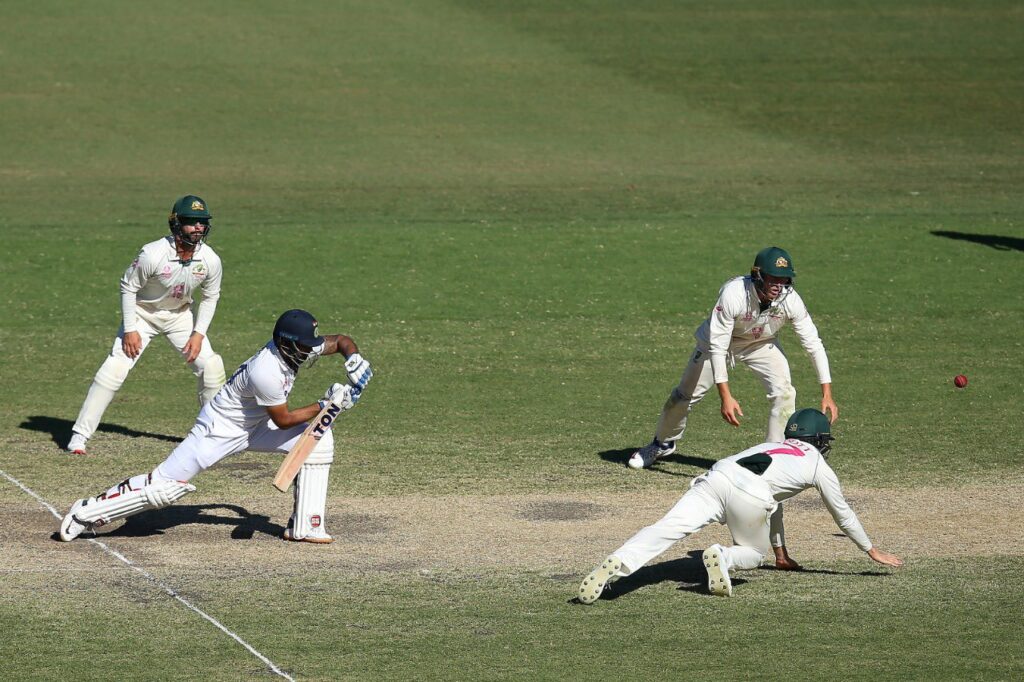
What was the most standout quality, which helped India win the 2020-21 series that Australia looked like running away with after the first Test? Other than everything else — courage to bounce back, belief in own abilities to attack the opposition, finding the right men for the right moments and a touch of luck — the fightback from 36 all out was also characterised by a steady show of grit.
It’s difficult to point at an individual and say that he was the prime inspirational figure. A lot of them contributed and these efforts were not always numerically eye-catching. There were no centuries before or after one by Ajinkya Rahane in the second Test. Mohammed Siraj in the last Test recorded the lone five-wicket haul. Yet, India kept finding something from here, there and everywhere.
The least spectacular of these priceless contributions came from Hanuma Vihari. Batting with a torn hamstring, which ruled out running between the wickets, he survived the entire last session with a bruised Ravichandran Ashwin after India had lost five wickets, to save the third Test. It was possibly the gutsiest passage of play seen from Indians in a marquee match overseas. Both missed the last Test, but handed their team a lifeline to win the series.
Vihari’s scores in that series before the unbeaten 23 off 161 balls were 16, 8, 21 and 4. But that period of stonewalling against a formidable attack made sure that he will be remembered when people talk about India’s Test heroics in Australia. Even on the previous tour in 2017-18, the middle-order bat was sent out to open in Melbourne and drew the praise of coach Ravi Shastri despite making eight, for sticking around for 66 deliveries. India won that Test.
The reason to mention Vihari is the fact that India on this upcoming series in Australia will miss someone like him or Cheteshwar Pujara. In a team of dashers, these two brought balance. They demonstrated the importance of respecting the bowlers and situations. Their methods were different, but no less effective. They helped India save sessions and eventually draw or win matches. These old virtues have no room in the Indian cricket system at the moment.
For the Latest Sports News: Click Here

This is not to advocate the inclusion of Pujara or Vihari. Both have not been in the scheme of things and Vihari doesn’t have scores worthy of a recall. He was not part of the Duleep Trophy, where the selectors put together four teams. There is no ground to bring him back, despite his decent-enough figures from 16 Tests, 13 of them abroad. This is just to highlight his silent and unattractive utility that the current crop of India’s Test cricketers lacks.
This team lives by the sword. That means there are occasions when they die by it too. This tendency failed spectacularly in the New Zealand series where the Indians showed no signs of having a rethink on the ‘high-risk, high-reward’ policy Gautam Gambhir had spoken about. Nobody looked ready to battle for multiple sessions either, like the chief coach had also mentioned. Captain Rohit Sharma was a prime example of following this formula and failing. There was no Plan B.
It’s a thin line between aggression and arrogance. There is nothing wrong with positive approach, because that is the only option for players and teams. Overdoing it looks good when it comes off and totally different when it doesn’t. This becomes glaring if players and teams start doing it blindly instead of opting for caution when the chips are down.
This is what this Indian team is not doing. A continuous urge to dominate is leaving too many doors ajar. So far, the team management has made no visible effort to address this. This is where they will miss the likes of Vihari and Pujara. Ability to absorb without throwing the counterpunch at inappropriate moments is what this lot doesn’t possess. It could be a precious shortcoming under pressure.
Also Read: Don’t judge Rohit Sharma based on what Gavaskar or Dhoni did




